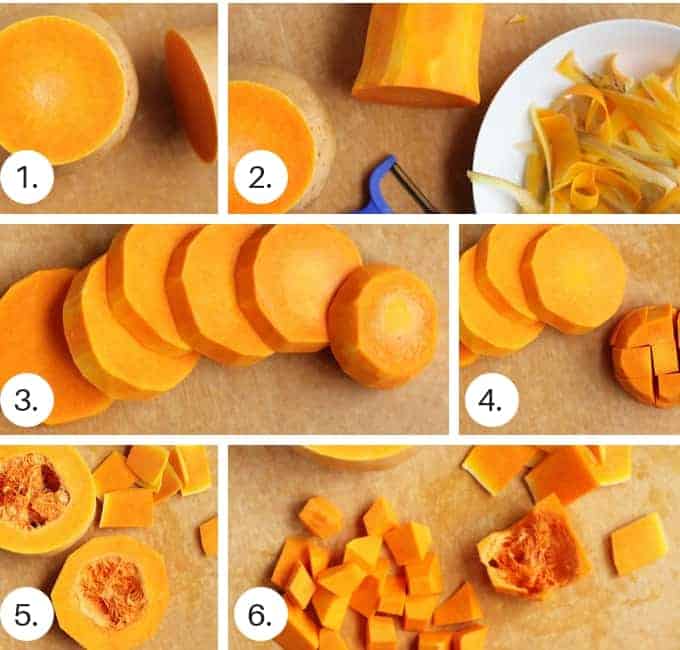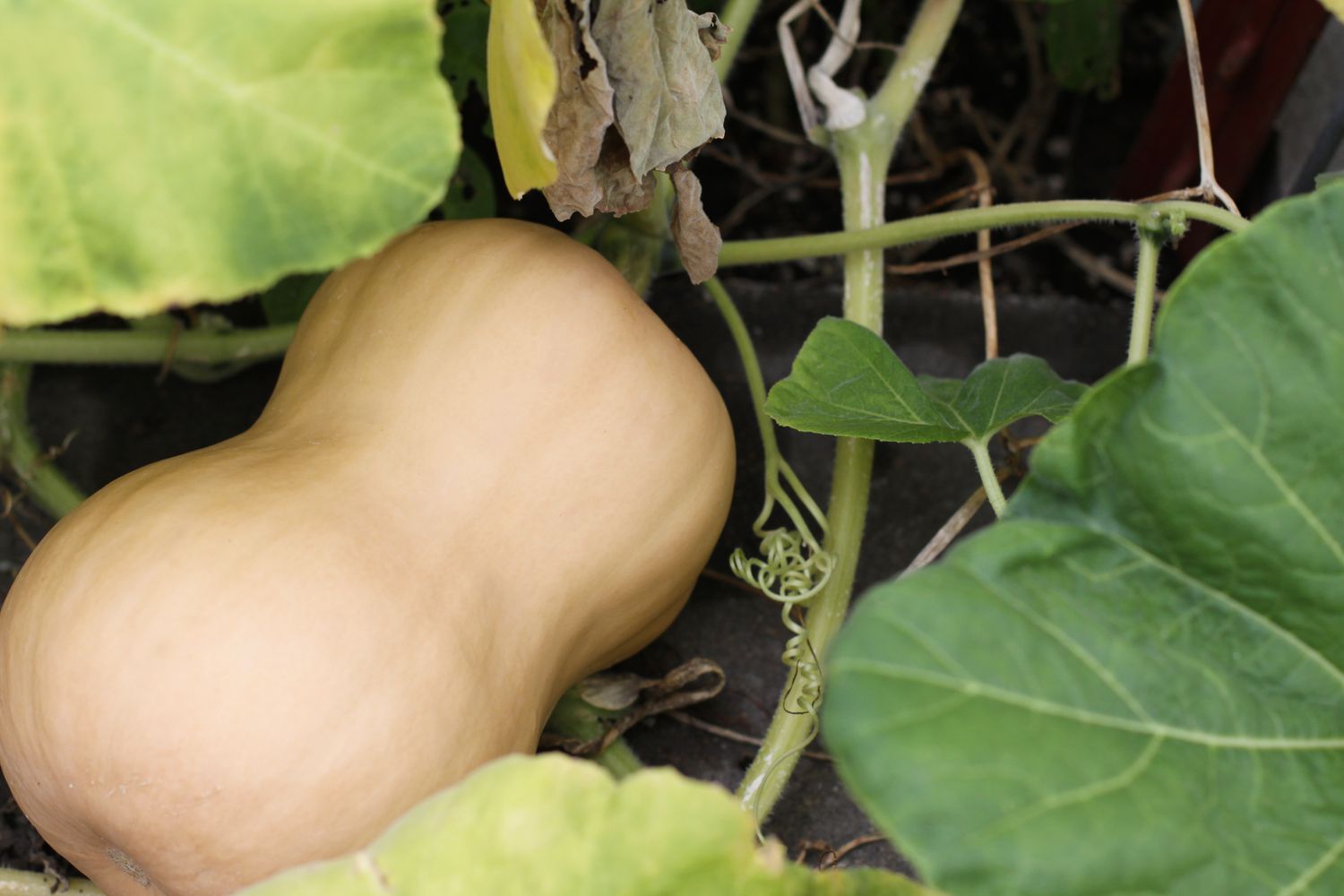So you’ve decided to grow your own butternut squash, but now you’re unsure about how to properly prune them. Don’t worry, we’ve got you covered with a step-by-step guide that will make pruning your butternut squash a breeze. Pruning is an essential task that helps promote the growth of healthy and productive vines, ensuring a bountiful harvest of delicious butternut squash. In this article, we will walk you through each step of the pruning process, giving you the knowledge and confidence to successfully care for your growing squash plants. Let’s get started and unlock the secrets to successful butternut squash pruning!

The Importance of Pruning Butternut Squash
Pruning is an essential practice for maintaining the health and productivity of your butternut squash plants. By selectively removing certain parts of the plant, you can promote air circulation, prevent diseases, control the size and shape of the plant, and increase the production of fruits. While it may seem intimidating at first, pruning butternut squash is a straightforward process that can greatly benefit your plants in the long run.
Promotes Air Circulation and Prevents Diseases
One of the main reasons why pruning butternut squash is important is because it helps promote air circulation within the plant. When the foliage becomes too dense, it can create a humid environment that is ideal for the growth of fungal diseases. By removing some of the foliage and creating space between the leaves, you allow air to flow more freely, reducing the chances of diseases taking hold.
Pruning also enables you to identify and remove any unhealthy or damaged foliage, which can minimize the spread of diseases. Infected leaves can harbor pathogens that can quickly spread throughout the plant. By promptly removing them, you can prevent the diseases from spreading and potentially save your entire crop.
Controls the Size and Shape of the Plant
Butternut squash plants have a tendency to grow vigorously and spread profusely if left unpruned. While this can be beneficial to some extent, it can also lead to overcrowding and difficulty in managing the plants. Pruning helps you control the size and shape of the plant, preventing it from taking up too much space in your garden.
By pruning away overgrown or crowded areas, you can ensure that each plant has enough space to grow and receive adequate sunlight. This not only improves the overall health of the plant but also allows for better fruit development. Additionally, pruning can prevent the plants from trailing onto pathways or neighboring plants, keeping your garden organized and visually appealing.
Increases the Production of Fruits
Perhaps one of the most compelling reasons to prune your butternut squash plants is to increase fruit production. Pruning stimulates the growth of lateral shoots, which are responsible for producing flowers and, ultimately, fruits. By removing excessive growth and redirecting the plant’s energy to these lateral shoots, you can encourage the development of more fruit-bearing branches.
Pruning also helps to improve the quality of the fruits. When the plant is allowed to grow overly dense, the fruits can be shaded by the leaves, resulting in poor coloration and uneven ripening. By selectively thinning out the foliage, you can ensure that the fruits receive adequate sunlight, leading to better flavor, texture, and overall appearance.
When to Prune Butternut Squash
Knowing when to prune your butternut squash plants is crucial for maximizing the benefits of pruning. Timing is everything, and with butternut squash, there are a few key milestones to consider.
Prune After Seedlings Have Established
It is important to allow your butternut squash seedlings to establish themselves before you start pruning. Once the seedlings have developed a few sets of true leaves and the roots are well-established, usually around three to four weeks after planting, you can begin pruning.
Pruning too early can stress the plants and hinder their growth, so it’s essential to exercise patience before diving into the pruning process.
Prune Before Flowers Begin to Bloom
Another critical timing factor to consider is pruning before the flowers begin to bloom. This is typically a few weeks after the seedlings have been transplanted into the garden or when direct-sown seeds have started to grow.
By pruning before the flowers bloom, you can encourage the plants to direct their energy towards lateral shoot development rather than excessive vertical growth. This sets the stage for increased fruit production later on.
Prune Throughout the Growing Season
Pruning is not a one-time event but rather an ongoing process throughout the growing season. As the plants continue to grow, it is important to monitor their development and make necessary pruning adjustments as needed.
Regularly inspect your plants for any signs of overcrowding, diseased foliage, or excessive growth. By staying proactive and pruning throughout the growing season, you can maintain the health and productivity of your butternut squash plants.

Tools and Materials Needed
Before you start pruning your butternut squash plants, gather the necessary tools and materials to ensure a smooth and efficient process.
Pruning Shears or Garden Scissors
Invest in a pair of good-quality pruning shears or garden scissors that are sharp and comfortable to handle. These will be your primary tools for cutting through the thick stems and foliage of your butternut squash plants.
Choose shears with a bypass cutting action, as they provide clean and precise cuts without crushing the plant tissue. Avoid using anvil-style pruning shears, as they can cause damage to the stems.
Gardening Gloves
Pruning can be a messy task, with sticky resin and potential thorns on the squash plants. Protect your hands by wearing a pair of gardening gloves. Choose gloves that fit well and provide good dexterity, allowing you to maneuver the tools easily while protecting your skin from any potential irritants.
Disinfectant Solution
To prevent the spread of diseases between plants, it is crucial to disinfect your pruning tools before and after each use. Prepare a disinfectant solution by mixing one part bleach with nine parts water. Dip your pruning shears or scissors into the solution for a few seconds, then wipe them dry with a clean cloth before using.
Regularly disinfecting your tools helps minimize the risk of transmitting pathogens from one plant to another, ensuring the health of your entire garden.
Step-by-Step Guide to Pruning Butternut Squash
Now that you’re familiar with the benefits of pruning, the ideal timing, and the necessary tools, let’s dive into the step-by-step process of pruning your butternut squash plants.
Inspect the Plant
Before you begin pruning, take a few moments to carefully inspect each of your butternut squash plants. Look for any signs of unhealthy or damaged foliage, such as discoloration, wilting, or lesions. This initial inspection will help you determine which areas of the plant need pruning and which parts can be left untouched.
Identify Unhealthy or Damaged Foliage
Once you’ve inspected the plants, identify the unhealthy or damaged foliage that needs to be removed. Diseased leaves can range from those affected by fungal diseases, such as powdery mildew or downy mildew, to those damaged by pests or environmental stress.
It is crucial to remove these leaves promptly to prevent the spread of diseases or pests. Cut them off at the base using your pruning shears or scissors, making sure to discard them away from your garden to avoid any potential contamination.
Cut Off Diseased or Damaged Leaves
During your inspection, you may come across individual leaves that show signs of disease or damage but are not severely affected. In these cases, you can consider cutting off the affected portion of the leaf. By removing the affected parts, you can prevent the diseases or pests from spreading while allowing the healthy parts of the leaf to continue photosynthesizing.
Make clean cuts as close to the base of the leaf as possible, ensuring that no diseased or damaged tissue remains.
Prune Overgrown or Crowded Areas
As your butternut squash plants grow, they may become overgrown or crowded in certain areas. Such areas can provide a hiding place for pests or create a dense canopy that inhibits air circulation. Pruning these overgrown or crowded areas helps to thin out the foliage, allowing more light and air to reach the interior of the plant.
Carefully identify the areas that need thinning and selectively remove the excess growth. Cut back the stems of the overcrowded branches, reducing their length by about one-third. This will redirect the plant’s energy to lateral shoot development and promote a more balanced growth habit.
Remove Suckers or Lateral Shoots
Suckers, also known as lateral shoots, are the vigorous new growth that sprouts from the base or the leaf axils of the plant. While they may seem promising at first, these suckers can divert energy away from the main branches and reduce overall fruit production.
To maintain the plant’s focus on the main branches and improve fruit production, it is advisable to remove these suckers. Using your shears or scissors, cut off the suckers as close to the base as possible, taking care not to damage the main branch.
Trim Back Vines that Extend Beyond the Desired Area
Butternut squash plants are known for their vigorous vines that can sprawl over a large area if left unchecked. To keep the vines within the desired area, it is important to trim them back as needed.
Identify the vines that have extended beyond the allotted space and gently guide them back to the desired area. Using your pruning shears or scissors, make clean cuts just above a leaf node, removing the excess growth. This will help maintain a neat and well-contained plant.
Pinch Off or Cut Back Excessive Growth
During the growing season, your butternut squash plants may produce excessive growth, particularly in the form of long, leggy vines or excessively leafy branches. To prevent the plants from becoming overly dense and sprawling, it is necessary to pinch off or cut back this excessive growth.
Carefully locate the areas that require pruning and remove the excess growth. For vines, identify where the main stem meets each lateral shoot and pinch off the end. For branches, find an appropriate point to make a clean cut, promoting a more compact growth habit.
Avoid Excessive Pruning
While pruning is important, it is equally vital to avoid excessive pruning. Overpruning can severely stress the plants and reduce their overall vigor and productivity. Remember to selectively remove only the necessary foliage and growth, preserving the plant’s health and balance.
Maintaining a reasonable amount of foliage is essential for supporting photosynthesis, which fuels the growth and fruit production of your butternut squash plants. Be mindful of the overall canopy and aim to strike a balance between pruning and maintaining a healthy amount of foliage.
Disinfect Pruning Tools
After you have completed the pruning process, it is crucial to disinfect your pruning tools to prevent the potential spread of diseases. Dip the blades of your pruning shears or scissors into the disinfectant solution you prepared earlier and let them sit for a few seconds. Then, wipe them dry with a clean cloth before storing them.
Regularly disinfecting your pruning tools between uses will help minimize the risk of transmitting pathogens from one plant to another.

Common Pruning Mistakes to Avoid
As with any gardening practice, there are commonly made mistakes when it comes to pruning butternut squash. By being aware of these mistakes, you can avoid them and ensure the optimal growth and productivity of your plants.
Pruning Too Late in the Season
Timing is crucial when it comes to pruning butternut squash, and one common mistake is pruning too late in the season. If you prune too close to the end of the growing season, you risk removing potential fruit-bearing branches, resulting in reduced yields.
To avoid this mistake, familiarize yourself with the ideal pruning timeline discussed earlier in the article. By adhering to the recommended timing, you can maximize the benefits of pruning without compromising the overall productivity of your plants.
Overpruning the Plant
Overpruning is another common mistake that can negatively impact the health and vigor of your butternut squash plants. While it can be tempting to remove excessive growth and foliage, doing so excessively can weaken the plants and reduce their ability to photosynthesize and produce fruits.
Remember to strike a balance between pruning and maintaining the necessary amount of foliage. By selectively removing only what is necessary, you can ensure that your plants thrive and produce an abundant harvest.
Not Disinfecting Pruning Tools
Failure to disinfect your pruning tools is a critical mistake that can lead to the spread of diseases between plants. When you use the same tools without proper cleaning and disinfection, you risk introducing pathogens to healthy plants, compromising their health and potentially causing irreversible damage.
Always remember to disinfect your pruning tools before and after each use, as discussed earlier in the article. This simple step can go a long way in preventing the transmission of diseases and keeping your garden free from unnecessary harm.
Aftercare and Maintenance
After pruning your butternut squash plants, it is important to monitor their progress and provide the necessary aftercare and maintenance to ensure their continued health and productivity.
Monitor for Signs of Diseases or Pests
Regularly inspect your plants for any signs of diseases or pests. Even with proper pruning and preventative measures, it is possible for issues to arise. Promptly identify and address any problems you notice, whether it be through organic pest control methods or disease management techniques.
Regularly Remove Weeds
Weeds can compete with butternut squash plants for vital resources, including water, nutrients, and sunlight. To give your plants the best chance of success, it is important to regularly remove weeds from the surrounding area.
Take the time to pull out any weeds that emerge near your plants, being cautious not to disturb the squash’s delicate roots. Maintaining a weed-free environment allows your plants to thrive and maximizes their productivity.
Provide Support for Heavy Fruits
As your butternut squash plants begin to produce fruits, they may require additional support to prevent the heavy fruits from weighing down the vines and potentially causing damage.
Consider using trellises, stakes, or slings to provide support for the developing fruits. This will help alleviate the strain on the vines and ensure that your harvest remains intact.
By incorporating these aftercare and maintenance practices into your routine, you can nurture your pruned butternut squash plants and set them up for success.
In conclusion, pruning butternut squash is a valuable practice that promotes air circulation, prevents diseases, controls the size and shape of the plant, and increases the production of fruits. By following the recommended pruning timeline, using the proper tools and materials, and adhering to the step-by-step guide, you can confidently prune your butternut squash plants and enjoy a healthier, more productive garden. Remember to be mindful of common pruning mistakes and provide the necessary aftercare and maintenance to ensure continued success. Happy pruning!




